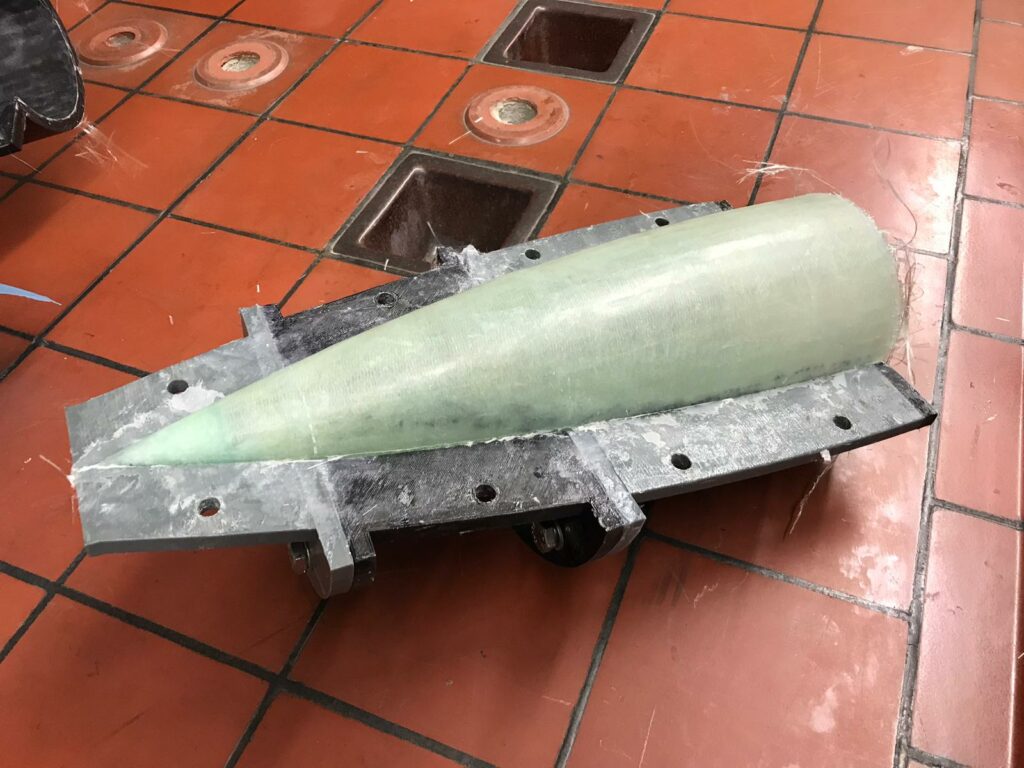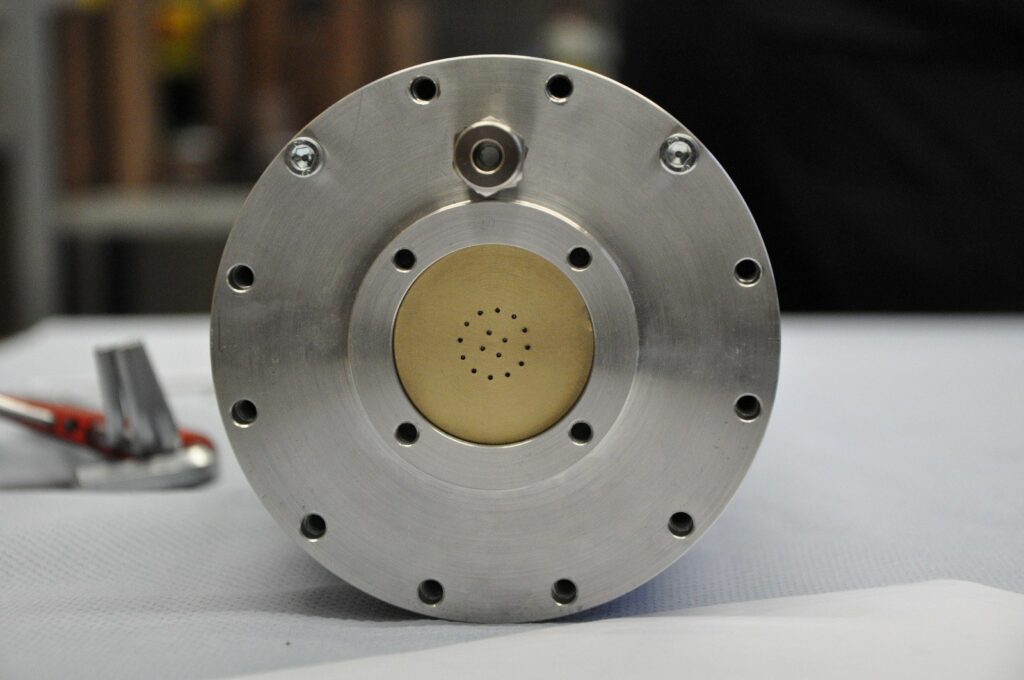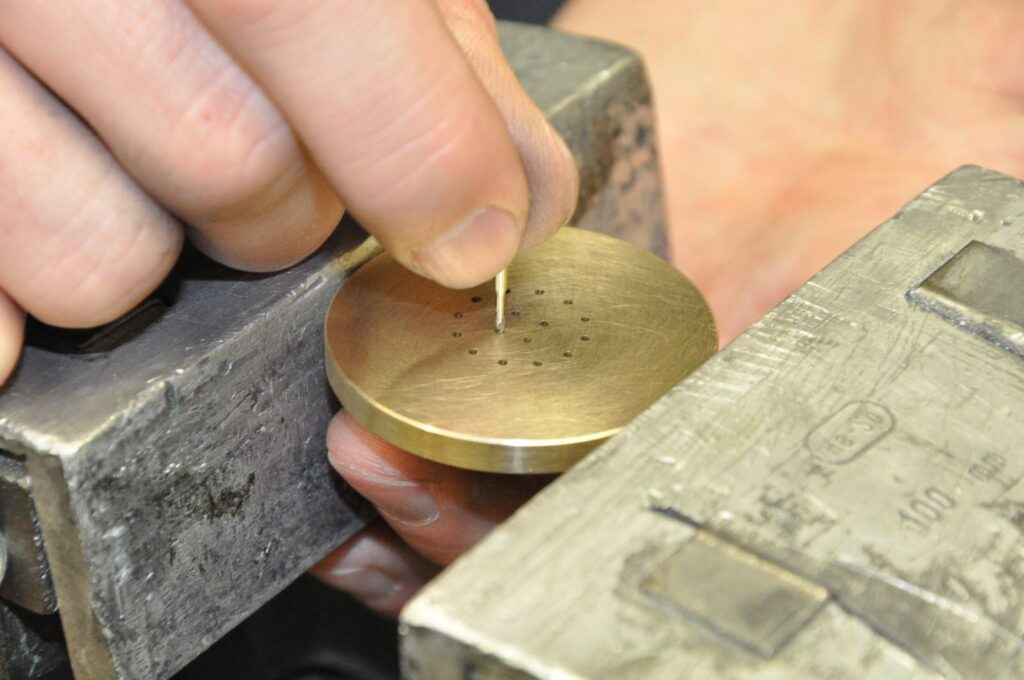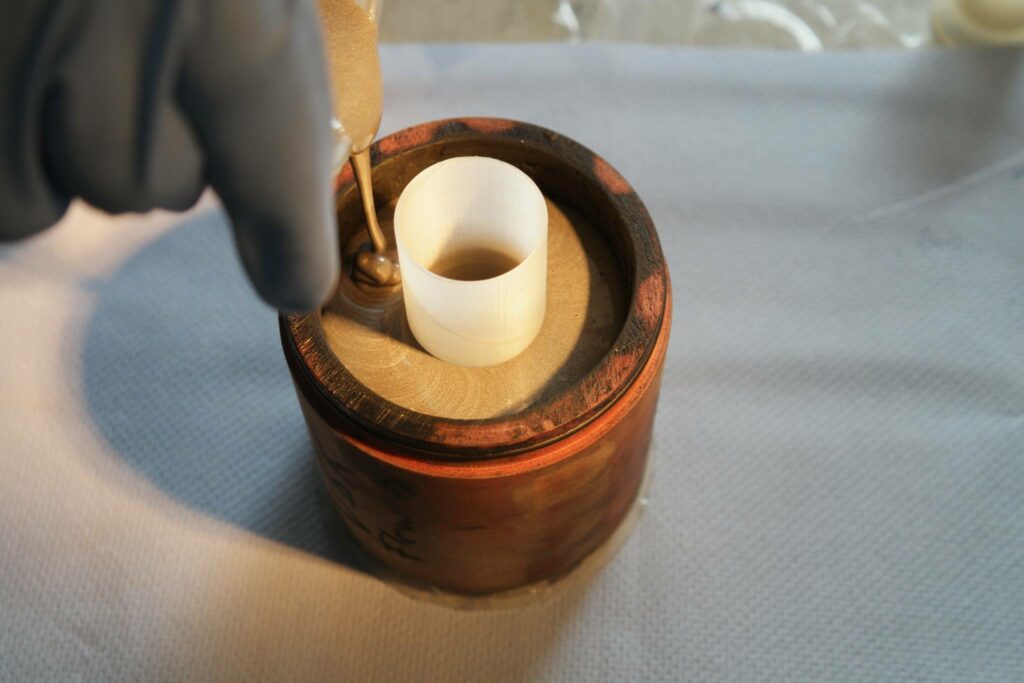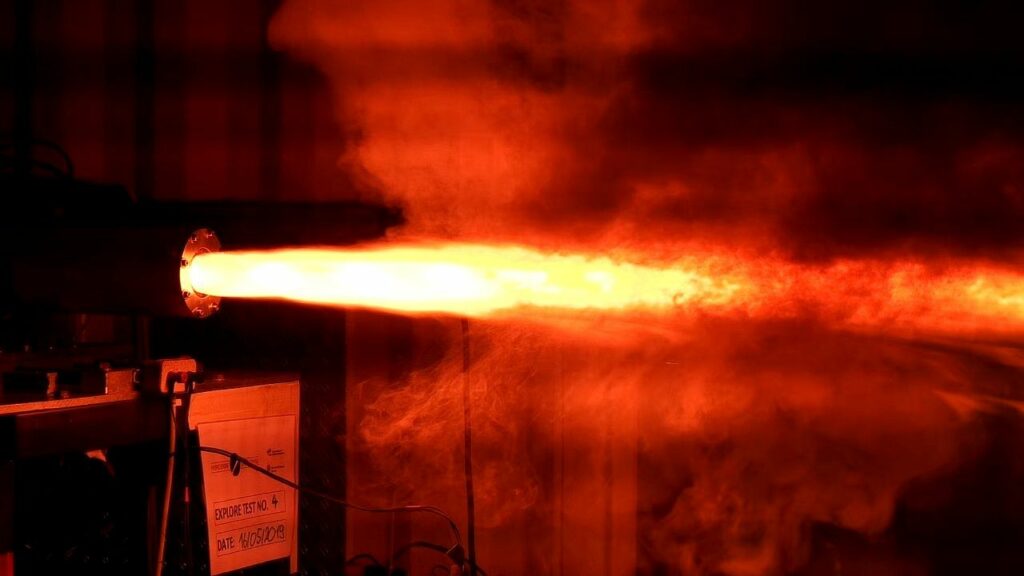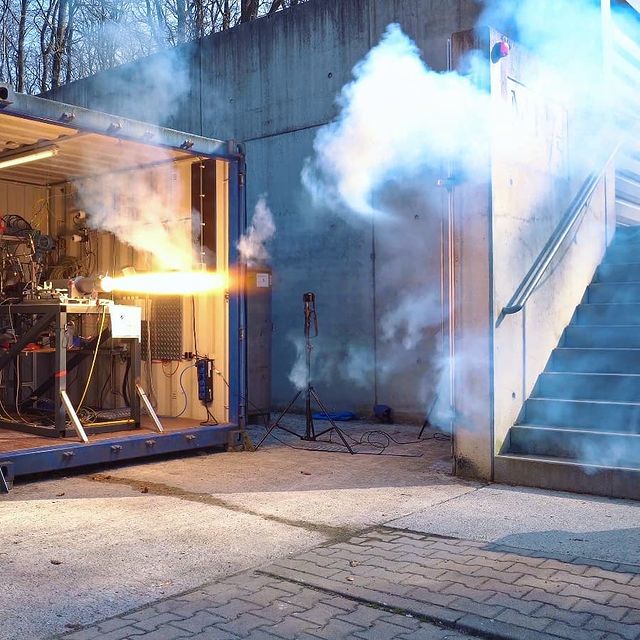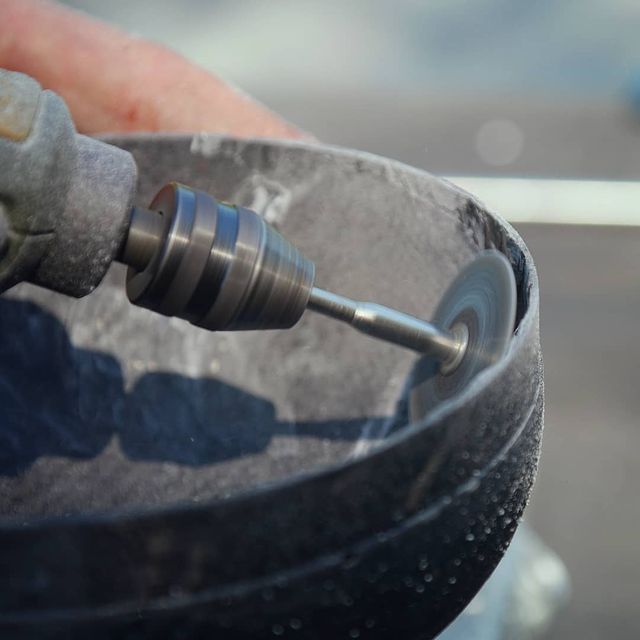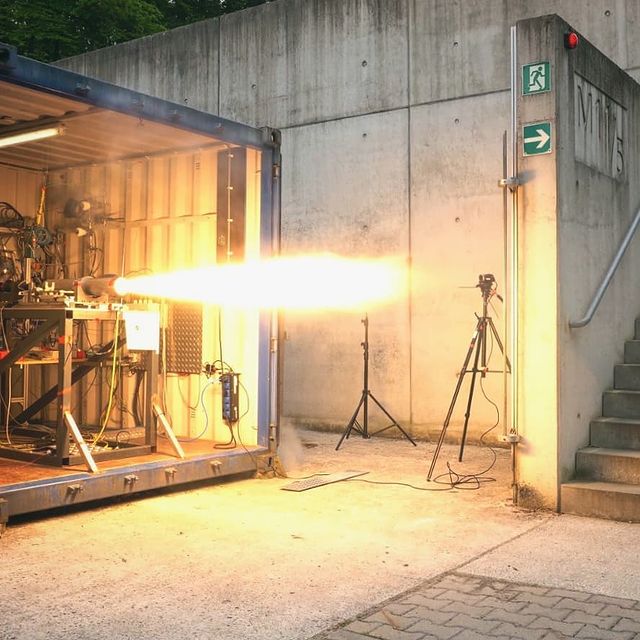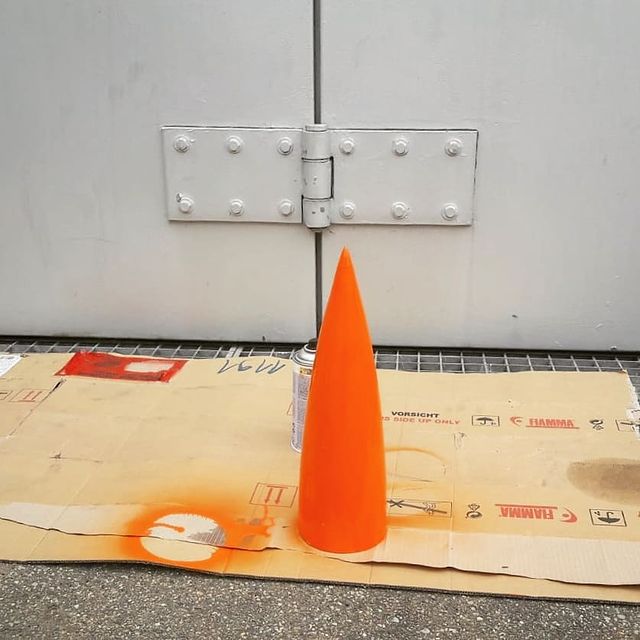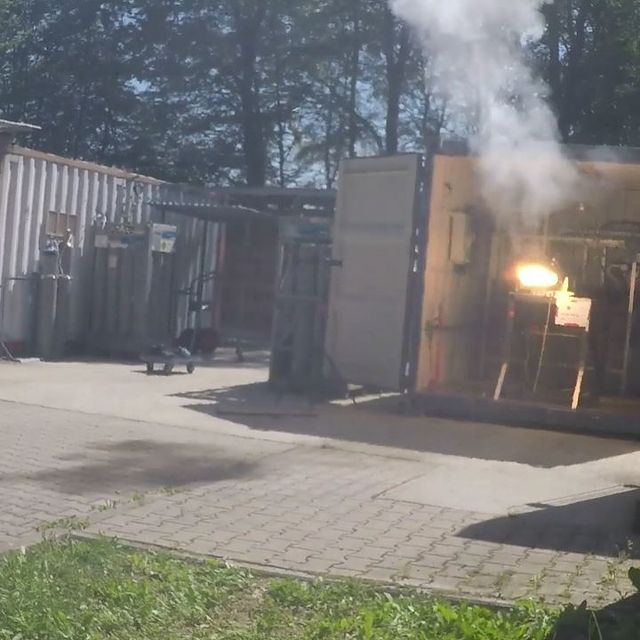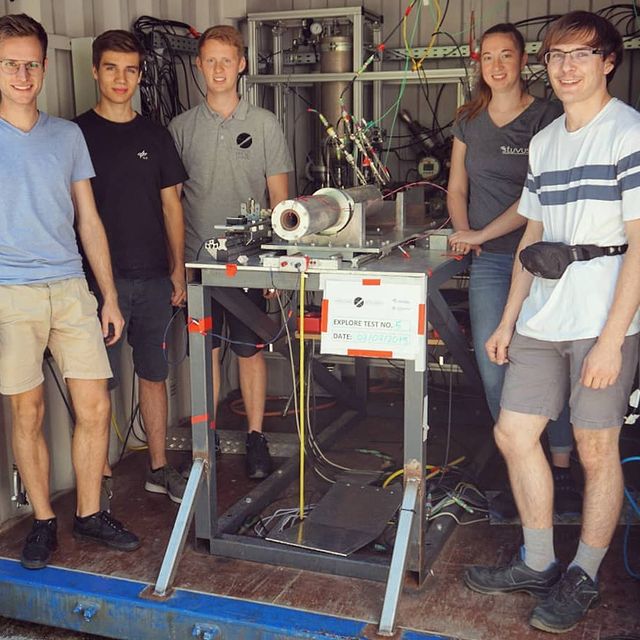EXPLORE is the Experimental Paraffin Liquid Oxygen Rocket developed by HyEnD after the successful launch of the CanSat Launcher. The project started in April 2017 and ended before the rocket could be launched due to the new participation in the DLR STERN program. However, many parts of EXPLORE will be reused in the demonstrator rocket of the STERN II participation.
The following picture gives you an overview of the rocket as it was planned:
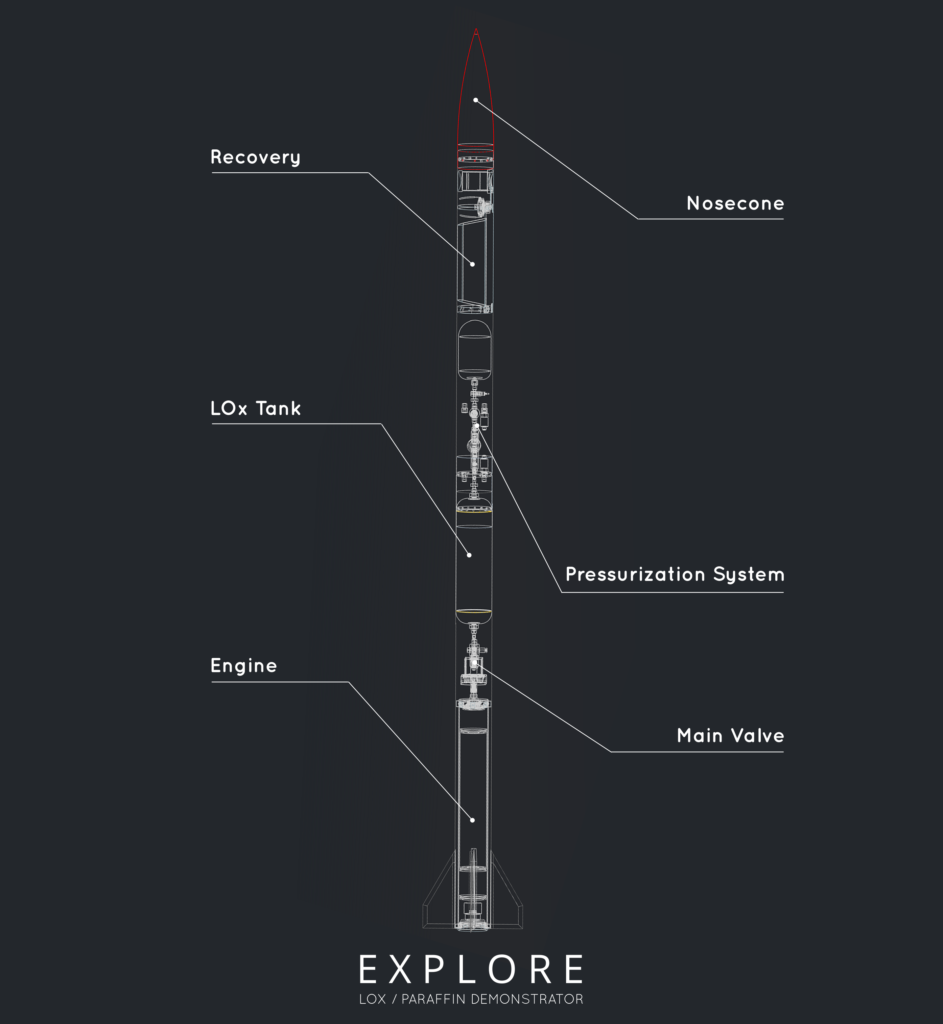
The rocket would have been able to reach a maximum altitude of 4500m while continuously transmitting telemetry data. EXPLORE’s dual parachute recovery system would have been radially ejected, as this has been proven feasible with the successful recovery of our CanSat Launcher. Besides a paraffin mixture, liquid oxygen was planned as oxidizer. As liquid oxygen doesn’t possess the same self-pressurization capabilities as nitrous oxide, which has been used in other projects, an external pressurization system for its tank was being developed. Gaseous nitrogen under high pressure was used to deliver the LOx to the combustion chamber. Because of the high pressure, there needs to be a pressure regulator in the rocket.
Besides its higher density, liquid oxygen enables higher efficiency of the engine (up to 260s specific impulse at sea level) when compared to nitrous oxide. However, the design of the fluid system becomes more challenging as it must handle the cryogenic temperatures. Additionally, a stable combustion of paraffin with liquid oxygen is harder to achieve. Overall, there were six engine tests which included different injector, nozzle and pre combustion chamber designs. The tests can be seen in the following video:
In summer 2019, HyEnD was in the preparations of modifications on the test bench in order to enable better testing of the engine. However, the project was ended in favor of the preparations for the HyFIVE tests of the STERN 2 participation. Many developments of the EXPLORE project will now be reused for the demonstrator and N2ORTH rocket.

